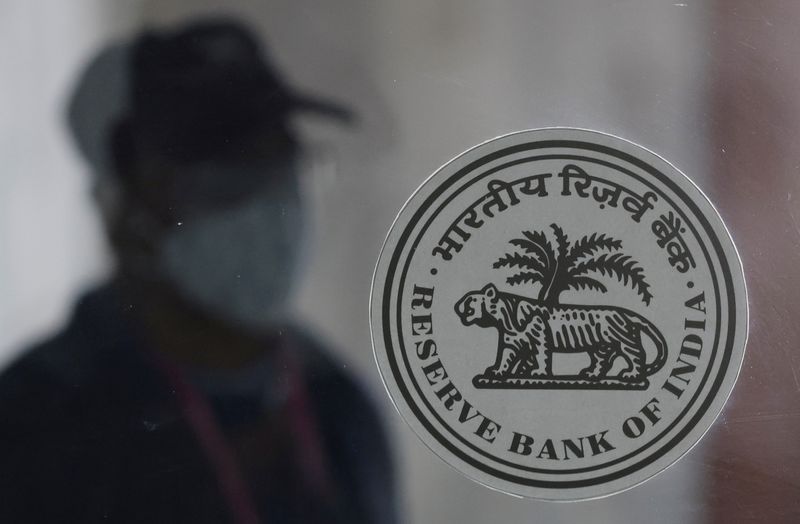By Arsh Tushar Mogre
BENGALURU (Reuters) - The Reserve Bank of India will hike its key interest rate on Friday, economists polled by Reuters said, but there was no consensus on the size of the move given the absence of any clear guidance from the central bank.
With inflation running at a near-decade high and the rupee trading near a record low, the RBI, which only began raising rates in May, is expected to front-load subsequent hikes to catch up with its global peers.
Predictions from the 63 economists polled between July 25 and Aug. 1 ranged from a 25 basis point hike to one of 50 bps when the RBI meets on Aug. 5.
Over 40% of economists, 26 of 63, expected the RBI to go for a hefty 50 bps hike, taking the repo rate to 5.40%. More than one-quarter of respondents, 20 of 63, forecast a smaller 35 bp hike. About 22%, 14 of 63, said 25 bps while the remaining three said 40 bps.
"The RBI should provide some clarity of thought, but when there's so much uncertainty, it's better not to come out with an expectation and then not able to match up to that," said Kunal Kundu, India economist at Societe Generale (OTC:SCGLY), who predicted a 50 bp rise.
A slim majority of economists, 35 of 63, saw the repo rate already reaching 5.75% or higher by end-year, up 10 bps from a July poll, while the median expectation is for at least 6% in the second quarter of next year.
The RBI has raised rates twice so far in this cycle, first catching markets off guard with a 40 bps hike at an unscheduled meeting, followed by 50 bps in June.
Kaushik Das, chief economist at Deutsche Bank (ETR:DBKGn), said the bank hoped the RBI would agree on the merits of front-loading rate hikes.
"The RBI can always reduce the pace of rate hikes from September onwards if inflation and growth momentum softens, but we think it is a risky strategy at this stage to be an outlier in delivering less than 50 bp rate hikes."
The outlook for next year was even less clear, with end-2023 forecasts ranging from 4.75% to 6.75%.
With the RBI a relative laggard in the global tightening cycle, India has seen heavy capital outflows, which have helped drag the rupee to lifetime lows close to 80 per U.S. dollar.
With the dollar expected to remain strong in the short- to medium-term, the RBI has few options to defend the rupee without burning through foreign currency reserves.

Just over half of respondents, 20 of 38, who answered an additional question said the exchange rate is playing a larger than normal role in the RBI's interest rate deliberations.
"Front-loaded rate hikes by the RBI will be complementary to their FX intervention towards managing the rupee's exchange rate," said Sanjay Mathur, chief economist for Southeast Asia and India at ANZ.